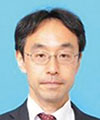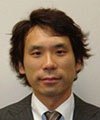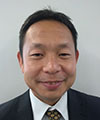 |
|||||||||||||
|
|
|||||||||||||
|
Global Standardization Activities Vol. 12, No. 11, pp. 104–109, Nov. 2014. https://doi.org/10.53829/ntr201411gls Cooperation between Telecommunication Enterprises in Japan and Other Countries in Smart Home Standardization Efforts—Activities of the HGI/ZigBee AllianceAbstractThe technical issues that are important for the business development of smart home technology are being addressed through cooperation and solution-sharing with telecom companies around the world in international standardization activities. These activities include the sharing of technical requirements by telecom companies in the Home Gateway Initiative and the use of requirements documents for standardization in the ZigBee Alliance. This article reports the current states of these activities. Keywords: smart home, HGI, ZigBee 1. IntroductionThe term smart home refers to devices in the home that are connected to services via the Internet. These services are being developed by telecom companies around the world, for example, AT&T’s Digital Life [1] and Deutsche Telkom’s QIVICON [2]. An important factor in developing smart home business is the in-home wireless communication protocol for connecting a home gateway and other customer premises equipment with various devices such as home appliances, sensors, and actuators. NTT is working to create an environment that facilitates smart home business development and to expand the market by cooperating with other telecom companies through the Home Gateway Initiative (HGI) [3], which is an influential organization in the telecommunications industry. The HGI members are focusing on improving ZigBee and other important in-home wireless communication protocols. 2. HGI activities2.1 Overview of HGIHGI was founded mainly by European telecom companies in 2004 for the purpose of writing specifications for applications and technology with respect to the requirements of home gateways. The members are telecom companies and vendors of systems, chips, software, and hardware. The members from Japan include NTT, NEC, Oki Electric Industries, Sumitomo Electric Industries, Hitachi, and Mitsubishi Electric. The basic plan is to effectively apply existing technology and to collect and organize common specifications for home gateways on the business development and technical fronts rather than writing new specifications. The HGI organization and roles are shown in Fig. 1. Work on the technical requirements documents is mainly being done by the Technical Working Group. The completed specification documents concerning home networks and M2M (machine-to-machine) are submitted to the relevant standards organizations for feedback via liaisons. The Technical Working Group utilizes the feedback from the standards organizations to set new specifications.
2.2 Activities of Smart Home Task ForceThe technical requirements for realizing smart home services are being discussed by the Smart Home Task Force, which produces a requirements specifications document (Table 1). The main technical fields and topics include use cases, architecture and system requirements, the operating environment of home gateways, in-home wireless communication protocols, and device models.
The home gateway operating environment is being specified mainly by Deutsche Telekom and Orange (formerly France Telecom) as sets of software modules and performance requirements for running in a Java/OSGi (Open Service Gateway initiative) software environment. HGI periodically holds test events to validate the specified performance requirements. Those events are held to determine whether or not the technology can meet the requirements and to build relationships among members. 2.3 Setting technical requirements for in-home wireless communication (RD039)In cooperation with Deutsche Telekom, Orange, NEC, and other members, we have been working in the Smart Home Task Force to set the technical requirements for existing in-home wireless communication protocols from the viewpoint of providing smart home services (RD039) [4]. Document RD039 sets the requirements that in-home wireless communication protocols must satisfy for usability (e.g., simple setup, setup support), communication reliability (e.g., averting interference, coverage), maintenance functions (e.g., testing functions, remote support), and security (e.g., authentication, encryption). NTT has proposed technical requirements for simplified pairing, optimized power consumption, appropriate addressing on restart, and isolation for when network problems occur, based on assumed improvements in the ZigBee IP (Internet protocol) expected to be used in Japan. The technical requirements were completed in May 2014 and formally released as RD039. Through collaboration with the Broad Band Forum (BBF) [5], another standards organization in the smart home field that was established in May 2013, HGI made RD039 available to BBF members as well. 3. ZigBee Alliance Activities3.1 ZigBee AllianceThe ZigBee Alliance [6] was established in October 2002 to set wireless sensor network standards and ensure interconnectability. This alliance follows the IEEE (Institute of Electrical and Electronics Engineers) 802.15.4 standard for the physical layer and MAC (media access control) layer, and is proceeding with the standardization for the higher layers including network layers and application interfaces. The members include telecom companies and vendors of systems, chips, software, and hardware. Companies from Japan that are participating include NTT, Oki Electric Industries, NEC, Toshiba, and others. In Japan, ZigBee SIG (special interest group) Japan cooperates with the ZigBee Alliance and other regional organizations to conduct information campaigns and carry out market studies and market development in collaboration with member corporations. The ZigBee Alliance organization and roles are shown in Fig. 2, and the process of setting the technical requirements is shown in Fig. 3. The ZigBee Marketing Steering Committee (ZMSC) and the Market Working Groups compile use cases and market requirements in the Market Requirements Document (MRD), which is submitted to the ZigBee Architecture Review Committee (ZARC). ZARC passes the MRD on to the appropriate Working Groups (WGs), which produce Technical Requirements Documents (TRDs). The TRDs define the technical scope, and specifications are written based on them.
3.2 Activities in the Technical WGNTT explained the in-home wireless technical requirements using the HGI RD039 document described in section 2.3 at the ZigBee Alliance in order to clarify to the Alliance members that ZigBee specifications should also follow such requirements. Also, as a member of the ZigBee Technical WG, we regularly compare the HGI in-home wireless technical requirements and the ZigBee technical specifications to check for correspondence. Simple connection functions for which there are no corresponding ZigBee technical specifications were proposed as new functions that are now being studied. The work on the MRD and TRD described in Fig. 3 had been completed as of June 2014. 4. Publicity activities at exhibitionsIn addition to using HGI RD039 to build relationships with the ZigBee Alliance and other wireless standards organizations, we are promoting improvements of in-home wireless communication protocols through presentations at international exhibitions. So far, we have made presentations at the Broad Band World Forum (BBWF; October 2013) in the Netherlands and at Wireless Japan 2014 (May 2014) in Japan (Fig. 4).
5. ConclusionWe have described our work toward developing smart home business through cooperation with telecom companies in other countries in the arena of international standardization, including HGI and the ZigBee Alliance. We will continue to participate in international standardization activities in the relevant technological fields and to collaborate with other telecom companies in solving problems and promoting services for smart home systems. References
|
|||||||||||||












